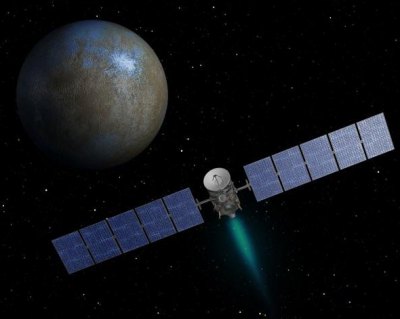NASA in Brief: Spacecraft nears Ceres

Dawn is currently 400,000 miles from Ceres, approaching at about 450 mph. Its arrival at Ceres will mark the first time a spacecraft has orbited two solar system targets. Dawn previously explored the protoplanet Vesta for 14 months, from 2011 to 2012, capturing detailed images and data about that body. Ceres and Vesta are the two most massive residents of the asteroid belt, according to NASA.
FINDING LIFE: Even if we never encounter a living, breathing two-legged humanoid creature on another planet, we might come across something small, maybe a microorganism. But how would we find it?
Scientists believe we may be able to detect its movement. Living things move. Even microorganisms vibrate in response to their metabolic activity. Scientists have developed a new way to detect life on other planets -- a nanomotion detector that studies fluctuations and links them to the metabolic activity of tiny life forms. Instead of measuring the chemical response of life, the detector monitors “the physical manifestation of any kind of metabolic activity the microorganisms might have,” according to the research paper, “Detecting Nanoscale Vibrations as a Signature of Life,” published by the Proceedings of the National Academy of Sciences.
EUROPA'S PLUMES: Remember how exciting it was last year when scientists said they had seen plumes off the Jupiter moon Europa?
Well, researchers are giving that finding a second look. Data collected by NASA's Cassini spacecraft during its 2001 flyby of Jupiter shows that Europa’s tenuous atmosphere is even thinner than previously thought, according to a NASA statement. The thin, hot gas around the moon “does not show evidence of plume activity occurring at the time of the flyby.”
If there is plume activity, it is likely intermittent, NASA concludes.
This report contains information from NASA news releases.
Related:
Hubble sees evidence of vapor off Jovian moon

